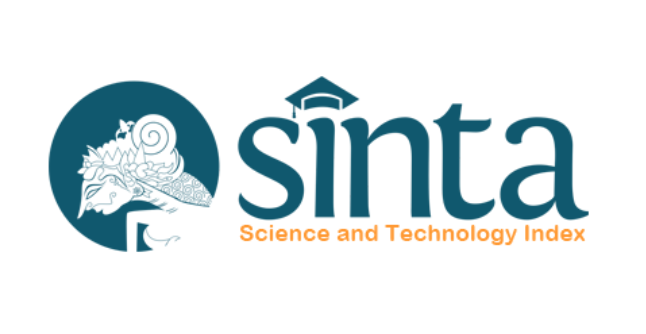OPTIMISASI MULTI-OBJEKTIF PADA KINETIKA PENGERINGAN KABINET SURYA
DOI:
https://doi.org/10.5281/zenodo.7246820Keywords:
Dryer, Optimization, Solar cabinet dryer, MATLAB, Design ExpertAbstract
Drying is one method to increase the storage time of organic materials such as fruit, seeds and vegetables. The cheapest drying method that can be used is to use heat from the sun. The research carried out is to optimize the existing drying system using Design Expert software and MATLAB using the Multiobjective optimization genetic algorithm (MOGA) method. Based on the optimization that has been done, it can be concluded that the optimization results related to drying variables are flow rate, heat applied, drying load, and thickness which are seen based on the results of the minimum drying kinetics value and the minimum drying time on DE-MOGA, TOPSIS drying value. time (f1) is 35613.9 seconds and drying constant (f2) is 6,125 x 10-5 1/second with parameter flow rate (x1) is 0,037178 kg/second, heat input (x2) is 640,036 W/m2, loading density (x3) is 1.418 kg/m2, and thickness (x4) is 0.00662 m. The results of this optimization are very important to obtain optimal drying production results and the existing data can be used for design on other materials.
Downloads
References
Raj, A., et al. (2019), Performance analysis of a double-pass solar air heater system with asymmetric channel flow passages. Journal of Thermal Analysis and Calorimetry, 136(1): p. 21-38.
Raj, A.K. and S. Jayaraj. (2021), Development and assessment of generalized drying kinetics in multi-tray solar cabinet dryer. Solar Energy, 226: p. 112-121.
Belessiotis, V. and E. Delyannis.(2011), Solar drying. Solar energy, 85(8): p. 1665-1691.
Kumar, M., S.K. Sansaniwal, and P. Khatak, (2016). Progress in solar dryers for drying various commodities. Renewable and Sustainable Energy Reviews, 55: p. 346-360.
El-Sebaii, A. and S. Shalaby, (2012). Solar drying of agricultural products: A review. Renewable and Sustainable Energy Reviews, 16(1): p. 37-43.
Hegde, V.N., et al.(2015), Design, fabrication and performance evaluation of solar dryer for banana. Energy, sustainability and Society, 5(1): p. 1-12.
Arun, K., et al.(2020), Drying of untreated Musa nendra and Momordica charantia in a forced convection solar cabinet dryer with thermal storage. Energy, 192: p. 116697.
Dejchanchaiwong, R., et al. (2016), Mathematical modeling and performance investigation of mixed-mode and indirect solar dryers for natural rubber sheet drying. Energy for Sustainable Development, 34: p. 44-53.
Lakshmi, D., et al.(2018), Drying kinetics and quality analysis of black turmeric (Curcuma caesia) drying in a mixed mode forced convection solar dryer integrated with thermal energy storage. Renewable Energy, 120: p. 23-34.
Abubakar, S., et al.(2018), Development and performance comparison of mixed-mode solar crop dryers with and without thermal storage. Renewable energy, 128: p. 285-298.
César, L.-V.E., et al.(2020), Thermal performance of a passive, mixed-type solar dryer for tomato slices (Solanum lycopersicum). Renewable Energy, 147: p. 845-855.
Arun, K., et al. (2019), Active drying of unripened bananas (Musa Nendra) in a multi-tray mixed-mode solar cabinet dryer with backup energy storage. Solar Energy, 188: p. 1002-1012.
Lakshmi, D., et al.(2019), Performance analyses of mixed mode forced convection solar dryer for drying of stevia leaves. Solar Energy, 188: p. 507-518.
Kuhe, A., et al.(2022), Effect of air mass flow rate on the performance of a mixed-mode active solar crop dryer with a transpired air heater. International Journal of Ambient Energy, 43(1): p. 531-538.
Downloads
Published
How to Cite
Issue
Section
License
Copyright (c) 2022 Authors and Publisher

This work is licensed under a Creative Commons Attribution-NonCommercial-NoDerivatives 4.0 International License.
The Authors submitting a manuscript do so on the understanding that if accepted for publication, copyright of the article shall be assigned to MACHINERY: Jurnal Teknologi Terapan as publisher of the journal. Copyright encompasses rights to reproduce and deliver the article in all form and media, including reprints, photographs, microfilms, and any other similar reproductions, as well as translations.Â
MACHINERY: Jurnal Teknologi Terapan and the Editors make every effort to ensure that no wrong or misleading data, opinions or statements be published in the journal. In any way, the contents of the articles and advertisements published in MACHINERY: Jurnal Teknologi Terapan are the sole responsibility of their respective authors and advertisers.








